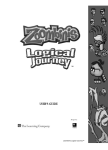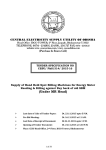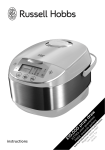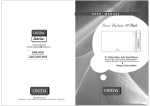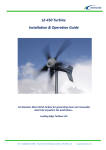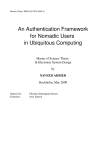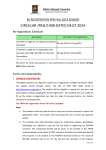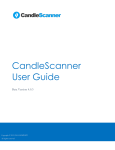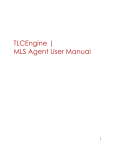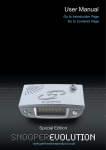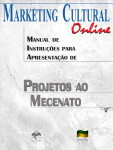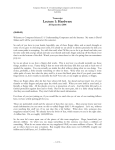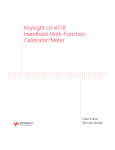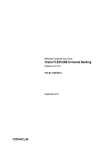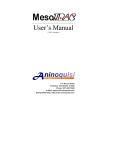Download PDF - Indian Students Association
Transcript
T h e A r r i v a l Enjoy your flight. Try to learn more about other nations from the co-passengers There can be international stops on your way to the U.S. International Stops : Generally passengers are required to get down at an international stop, which might be for Security checkup or cleaning of the airplane. You will be given a 'transit card` or say 'transit visa`. Normally the halt is for a couple of hours. Listen to the announcement which is always made before the international halt. You will hear information about departure time, gate number etc. After getting down at Intl. Airport, you can move around in the airport. But be at the gate within 45 minutes of your flight's departure for the onward journey, 'cause they may require to check your tickets etc. Once you get in, you are all set to take off for the final destination. Immigration: The first thing you need to go through at the port-of-entry U.S. airport (international airport where you first land in the U.S.), after landing is the immigration and customs clearance. After which you may board a domestic flight to reach your final destination. Before getting down at your port-of-entry final international halt, inside the plane, you will be given a form to fill up called I-94. SPECIFY DCI`s CONTACT NUMBER, ADDRESS AND OTHER OFFICIAL INFORMATION AS YOUR CONTACT NUMBER, ADDRESS WHERE YOU ILL STAY etc. On alighting from the plane you may ask people or signs will guide you to the immigration. Keep your passport, H1-paper ( Blue form ) and the form you filled inside the plane, handy. At the counter you might be asked some questions. TALK ABSOLUTELY TO THE POINT. DON`T TRY TO LIE. MAKE SURE THAT WHATEVER YOU SAY IS WRITTEN ON THE PAPER. You will be given the counter foil of I-94 form. Keep that very carefully. And say to yourself "WELCOME TO USA". 3.3 Baggage Claim : Try to acquire some 25 cent coins (called "quarters"), which you may need for getting a trolley cart for your baggage and also for making telephone calls etc. Thereafter move toward the baggage claim carousel assigned to your flight, simply follow the signs directing you to the place. Collect your luggage and look for signs directing you to customs clearance. At the customs clearance they may ask you to open your bags for a security check/verification. 3.4 Domestic Flight : Since the Port-of-entry may not be your final destination in the U.S. and you have to proceed onwards, locate the counter for the domestic airline you will be taking to your final destination. Above all don't hesitate or feel shy to ask for help from airport support staff (at information desks) or police officers, if you need anything. Follow signs directing you to your domestic flight because you will need a boarding pass. If it is far away, take the Airport shuttle (bus) service which is free. If you don't know where to get down, tell the driver in advance and he will drop you off at the proper place. At the counter (podium) check-in your baggage and get your boarding pass issued and ready. On arrival at the final destination, collect your baggage once again and look around for that someone who may be there to receive you. If you don't find anyone or you already have specific instructions, follow those, otherwise call up (telephone) the DCI area coordinator whose tel. number you should be carrying. Therefore remember to keep phone numbers handy. Get information from the DCI area-coordinator on the stay arrangements made for you. Finally, if no one comes to pick you up, try to locate the information counter from where you will get all the information regarding how to call for Also the Public Transport section of this guide will help you in understanding the travel facilities available in the U.S. U s i n g T e l e p h o n e s The first thing you might do when you come to USA is call someone. So this is a good time to tell you about telephone usage. Telephone calls within U.S. are considered "local" (within the area of the caller) or "long distance" (outside the area of the caller). Local calls within a short region are free unless made from a public pay phone which is a coin operated machine. Long distance calls are charged at varying rates, depending on how you make the call (which long distance carrier/company you use), for how long you speak and the time of the day. Note that the telephone companies in the U.S. are private. Each local region is assigned an "area code". So the phone numbers are denoted as (area code)-123 4567. where 123-4567 is your actual phone number. If you are calling a number within your "area" then you should dial only the phone number. If the call is outside your area you need to dial 1-(area code)-123-4567, which is the long distance call. Again, sometimes when the area code is the same as yours, you may still have to dial a "1" before the number without the area-code e.g. 1-<7-digit phone number> To make an international call i.e. to India you need to dial 011-91-<STD CODE>-<TEL. NO.> e.g. 011-91-22-1234567. Here 011 indicates an international call. 91 is the country code for India. 22 is the "area code" for Bombay and 1234567 may be the actual phone number you want to dial. Other important facilities provided are – 1. Yellow pages (Tel. directory) Advertisements and Telephone numbers of businesses. 2. Emergency Telephone Number There is one emergency number that you can dial for any type of emergency which is 911 (Fire/Ambulance/Police). 3. Directory assistance Local telephone numbers - 411 Long distance - 1-(Area Code)555-1212 Toll Free number enquiry - 1-800-555-1212. 4. Toll freeMost of the 1-800 numbers are toll free. You will not be charged for the calls you make to such numbers. e.g. The toll free number for Mr. Ashok Agarwal (DCI California) is 1800-969-1117. This is a toll free number and you can dial it from anywhere in the U.S. without having to pay for it, even from a public phone. Some telephone numbers have alphabets in them such as 1-800-COLLECT. To dial this number, just press the digit on the telephone pad which has the corresponding alphabet you want to dial on it, simple!. Most people use answering machines which are connected to their telephones, or some kind of voice mail system. It has a standard pre-recorded greeting which is played when you call up and then after some beeps, it records your message. Initially you will feel like you were talking to a dead person, but soon you realize the importance of owning an answering machine. We bet you'll buy one too! Using the PUBLIC "pay" phones: The important difference is, you need to insert the money first then dial the number. To operate a pay phone you need 25 cents. This pays for one local call. If your call is not connected your money is returned in the "coin return" slot. Collect call - If you want the called party (person whom you are calling) to pay for the call then you make a collect call. To make a collect call pick up the receiver and press 0. Let the operator know that you want to make a COLLECT call, the operator will connect you to the phone number you need. But before that the operator will check with the other party if they want to collect (pay for) the call. An easier way is to dial 1-800-COLLECT from any phone and just follow the recorded instructions. Time zones : There are four time zones in the U.S. 1) Eastern TZ. Example: Massachusetts, New York, Florida etc. 2) Central TZ (lags Eastern TZ by one hour). Example: Iowa, Kentucky, Indiana etc. 3) Mountain TZ (lags Eastern TZ by two hours). Example: Colorado, Utah, Wyoming etc. 4) Pacific TZ (lags Eastern TZ by three hours). Example: California, Oregon, Washington etc. Day light saving: As the name suggests, the time is set in such a way that maximum day light could be used. e.g. during summer, the sun rises at around 4-5 o'clock. So the clock is set forward by one hour. This forces all activities to start one hour earlier so that maximum day light is used till late in the evening. Therefore: The Clock is set back by one hour on the first Sunday of November 1 (Fall Season) at 2:00 am. Clock is once again set forward by one hour on the first Sunday of April at 2:00 am. (Spring Season). The easiest way to remember this is FALL BACK, SPRING AHEAD. By the way, Arizona is the only state which is not affected by daylight-saving. People there do not ever change the time in their clocks. Currency: Dollar: 100 cents, Quarter: 25 cents, Dime: 10 cents, Nickel: 5 cents, Penny: 1 cent. Initially there is some confusion since the quarter is exactly of the same size and shape as the Indian 50 paise coin. P u b l i c T r a n s p o r t All major cities have some sort of public transportation not necessarily very good or frequent or well connected. Therefore most people prefer to travel by their own cars. It is better that you own a car in the U.S. so that you are independent. But till you get to buy a car you can use the public transportation system or depend on your friends/colleagues for a ride. 5.1 Trains and Buses: In most cities, you may purchase Daily Tickets from the conductor or the driver on the train and buses each day. For more information on routes, schedules and fares, see the publications and maps published by the city's local authority. You can locate them in your telephone book. 5.2 Taxi Companies: In some areas you must telephone for a taxi and make an appointment. You will not find them waiting in the street corners but you do find them waiting in a queue at the airport. Taxis are listed in the yellow pages under the name "Taxi" or "Taxicabs". When you call, tell the "dispatch" operator where you are and where you want to go. The dispatch operator will tell you how long it will take for the taxi to arrive at your starting point. He or she will ask for the telephone number, so they can call you if the taxi driver cannot locate you. You should ask for the estimated cost of the ride. When you enter the taxi, the meter will read flat rate. This is the minimum charge. You will be charged the flat rate for each mile you travel. F O O D , I ' m h u n g r y Of course you must be hungry, when you arrive. God knows what you ate on the plane. You don't remember the neither item's name nor its contents. It may be one of the weirdest things you ever had for dinner or lunch. So you must be apprehensive about what you will get for lunch or dinner. The best thing you can try is PIZZA, which is pronounced as "PiTza". You get both Veg. and NonVeg Pizzas. But to be on the safer side order a Veg. Pizza that way you won't be left hungry atleast. Order a small pizza if you are alone or a medium size is enough for two or three (well it depends on your appetite actually). You can order pizza by phone and it will be delivered at your doorstep in a few minutes. Refer to the yellow pages or consult the motel receptionist you are staying in, for information. For breakfast, have 'Continental breakfast' which is cheap and the best. To be sure about Veg. items, always ask for items with "NO MEAT" rather than "WITHOUT MEAT". Besure to say "NO ICE" if you prefer to have your drink without ice. And remember that a CHEESEBURGER is a misnomer. It contains meat besides cheese, so be careful! Here is a guide for Vegetarian Dishes: Mexican: Bean Burrito, Enchiladas, Bean Taco, Cheese Taco, Bean Tostadas, Mexican Pizza. Italian or Greek: Eggplant (brinjal) sandwich, Sphagetti with tomato sauce, Lasagna (pronounced Laza-nya), Italian Pitza, Italian Pasta with tomato sauce, Falafal, Veg. Gyro (pronounced Yero). Denny's: Vegetable omelette (with eggs)Vegetable lunch/dinner (salad, potato smash, garlic sauce) Broccoli soup. American Restaurants (Sizzler, Olive Garden) : Best bet is salad bar & French fries. McDonald's: Mac cheese sandwich, Milk shakes, ice-cream sundaes. Pizza Hut: Veggie Lover's delight, Veggie pizza with a choice of toppings such as Jalapenos (pronounced Hala-pin-yose and are green chilies), pineapple, tomato, onions etc. Burger King: Veggie cheese whooper, Garden burger. O E f n f i c e v i r o a n n m d e t n h e W o r k t Before you start your first day, get a hang of how the work environment is at the client's place from any PCS person there or read on for some typical environments you may find. - Project Leaders are very understanding and friendly. And do not unduly pressurize you to perform. They will definitely give you some time to come up to speed on their work environment. - There is a lot of individualistic approach. Every person's inputs are given a lot of importance. Independent views are respected. Before discarding any of your ideas, they will give you a good enough reason for doing so. - For the smallest of decisions they will sometimes hold a meeting and get the entire team's inputs/comments/suggestions before proceeding. One feels important when this is done. But sometimes it can get boring. - Nobody double-checks what you are saying, they take you for your word. -There are no suspicious feelings and managers don't fear subordinates. - Managers will openly discuss about their meetings with "their" bosses, with the team. There is no hide and seek as far as information/feedback is concerned. - People admit if they don't know or have information about certain things. They don't pretend to be all knowing. - People are dedicated to their area of work and develop expertise in it. But they do not talk about work related topics, which are not in their area of expertise, they immediately refer you to the right person. - People enjoy their work and leisure. They plan their weekends well in advance. Very few people stay back late in the office or come and work during weekends. Such things are not related to performance. As long as you do your work well and within time, nobody cares what else you do. - Most companies allow you to compensate by working during the weekend if you take an 'off' from work on a regular weekday. - The work hours in most companies are flexible. Come anytime and go anytime but you do need to put in a minimum of 8 hrs/day or 40 hrs/week as contractors. - Regular time sheets "may" have to be filled, in some companies. A B m e r i e h a v c a n i o r s a n d t h e i r Its helpful to know how Americans typically will be. Otherwise you will start feeling "These people are great dramatists... ". Here are some tips:- Americans are very friendly and helpful. - They don't make you feel like a foreigner. (Though you feel!). - It is very easy to adjust with them. But they don't like people getting very inquisitive or trying to get too personal in the initial phase of the acquaintance. - They dress casually and nobody bothers which dress you wear etc. - They are fun loving creatures and enjoy their free time. Most of them like to keep themselves physically fit by regular outings, hiking, exercise, biking, jogging etc. They love the outdoors and natural surroundings. They look forward to weekends and plan their weekend activities in advance. This usually consists of some outdoor activity. - They are frank about their opinions. - They respect individual views and allow everyone to voice their own ideas on a subject. - They have a lot of patience. Especially when standing in queues or while driving, nobody will try to jump before you in the queue. Most of them are very disciplined drivers. However this differs from State to State. - If they happen to come in your way or you happen to come in their way, you will promptly hear an "Excuse me" or "Excuse us". - They need a lot of feedback while talking. You have to acknowledge/nod continuously. Otherwise they feel you are not interested in listening or are confused. - They gesture a lot and shoot some funny (at least so it seems initially) phrases at you. It is a matter of "getting used to it". - They are "very" proud of their country. To them, the Universe is the United States. So never ever make fun of or speak lightly about them or tell them that they do not have any social/cultural background. You will make more American friends that way. - Most Americans think of India as a poor country of beggars, snake charmers and swamis etc. This is due to the insufficient and improper media coverage given to India. Their T.V. only shows the poor Indian villages and cows on the streets. Hope you will be able to prove that India is a country of INTELLIGENT people like you and not just ELEPHANTS and SNAKE CHARMERS. I n i t D C I i a l p a c k a g e f r o m NOTE: The first official thing you should do without being asked to, is to apply for your Social Security Number - details are given in this doc. After arriving in USA one gets a package from DCI. This package consists of different types of forms. The most important one being the Medical Insurance form. Don't be careless about this, make sure to fill and return it soon. After receiving this package one should sign all the forms and send it back to DCI as soon as possible. This package consists of following documents. Personal details: In this form you need to fill up all your personal information which is required for official purposes. Passport details: In this form you are expected to furnish all your passport details. Away from business expenses form : One is supposed to fill up this form at the end of every month. We get our salary in two parts. One is Salary or Allowance and the other part is the reimbursement of the expenses incurred. Your area coordinator will inform you about what amount you can claim etc. It depends on the position and the class of city you are in. Couple of memos: These memos inform you about certain rules. Medical insurance registration form: (MOST IMPORTANT FORM) This form you are supposed to send to the medical insurance company. It needs routine personal information. In two weeks of time you will receive your medical insurance card, which will cover most of your medical expenses in the U.S. But be sure you understand what is covered under this scheme and what is not. You are supposed to send all these forms and memos asap. Couples of these forms require your Social Security number. If you have not yet received your social security number then leave that place tentatively blank in your forms and you can inform DCI about it later, when you get one. G e t t i n g S o c i a l S e c u r i t y You must go and get your social security number and driving license done immediately after you come. 12.1 Social Security Number Each individual in Unites States is required to be registered with US government by law. The way we have registration in India through Ration Card it is Social Security here. This number is very useful for the government as well as the for the individual. Government can keep track of the individual from this particular number. You will need the SS number for any official paper work or dealings e.g. while filling Tax forms or while opening a bank account or while getting a membership in the public library. A person's entire credit history can be traced from this number. As soon as one arrives in US he/she is required to get Social Security number immediately. It is a very simple procedure. Every town or a city has a Social Security office. You have to go there with your Passport. First thing you need to do is collect the application form for new social security number. These forms are available in various languages. Find one in English and fill it completely. It will ask you for your local postal address details besides other information. The officer will check your application form and passport. After checking everything you will be informed when you will be receiving your Social Security number, which will be by postal mail. Generally within three to four weeks time you will receive your social security number which appears printed on a small card, which you should carry/preserve safely. D r I D i v i n g L i c e n s e / P h o t o - Getting Driver's License Driver's license is one of the most important documents required in United States. Apart from driving needs it is required at almost all the places where you need to show your ID. Mainly because this is the only valid Identity card which is required and approved at all the places. Here in US most of the money transactions are done via checks or Credit cards. Initially when you don't have credit card, check is the only practical and recommended way of payment. Nobody keeps cash. People generally issue checks even for a small amount of less than $5.00. Checks are as good as Cash and can be deposited at any ATM (Automatic Teller Machine) center. These checks are accepted only with a valid PHOTOID at most places. Actually a Photo-id could also be a simple identity card issued by the DMV (Dept. of motor vehicles), which is not a driver's license. At most places Driver's license is the only valid PHOTO-ID. So after getting Social Security number, Driver's license is another very important thing one should acquire as soon as possible. Getting driver's license is not very difficult here. Before appearing for a driving test behind the wheels one has to clear a written test conducted by DMV (Department of Motor Vehicles - similar to RTO in India). Each state has their own laws for driving a vehicle. DMV issues a book on the rules, which are required to be followed very strictly. This book gives detailed information about all the laws and is written in a very nice manner. It is very easy to follow all the rules as they are nicely explained and if necessary, supported by good photographs. After understanding the contents of this book you can appear for the written exam. You can appear for the test on any working day. You can call up DMV and take an appointment with them or you can even go directly. They will check your Passport and will give you a question paper. Questions are objective type and you have to choose the best answer for each question. Time is no limit for the exam. After you are done with it, the person on the counter will immediately check your paper and will tell you your score. Upon passing this test you will get temporary driving license which is valid for two months. DMV also issues an ID card. The state government issues this. You can use this ID card as a Photo-Id till you get your driver's license. At some places you are required to produce two Photo-Ids, that time it is very useful to have this photo-id you can even go for some driving lessons. For driving lessons you can go to driving school or to a private teacher. Private teachers are little cheaper as compared to driving school. Once you are ready for the test, again you will have to take an appointment with DMV for the driving test. On the day of appointment you have to go there with your learning license. The car in which you will give your driving test should have proper Insurance papers. Also check all the controls, including signal lights and brake lights. If any of these is not in shape, you will not be allowed to appear for the test. This test will be of 100 marks. After your test, driving inspector will immediately tell you your result. Generally they explain to you your mistakes so that you can work on them and rectify. If you have passed you will get your license immediately in most places. If you fail there is no minimum period required between the time you appear again. So you can practice again and appear as soon as you can. B a n W r i - - - - k t i A c n g c o u n t s / C h e q u e They are basically of two types - Savings a/c (with interest) Checking a/c (with NO interest) Generally most people open a Checking a/c at first. To open an account you need a social security number, however since it takes a week or more to get the social security number one can request the bank to verify the passport and open the a/c. Later do remember to inform the bank once you receive your SS number. Then there are concepts like Minimum balance - which is either NO or YES (It is better to open an a/c with NO MINIMUM BALANCE otherwise you have to maintain the specified minimum amount always in the account). Overdraft facility - Again NO or YES (This allows you some amount of overdraft. This might be beneficial in some cases, such as when the monthly salary is not received on time and the house rent, phone bills etc. has to be paid.). There are various kinds of check/cheque books available that one can choose from, such as the kind of colored paper and printed background design on paper etc. Usually a set of 200 checks bound together in books of 20 each is sufficient for 6 months. But it depends on how many checks are issued by you and at what frequency. The first check book is given by the bank immediately on opening an account, the other 200 checks are mailed to you at the given address. The next thing is to ask for an ATM card. This allows you to withdraw money 24 hrs. from any ATM machine of the bank or related ones. Some banks charge money to issue an ATM card and the first set of check/cheque books. Something like $10.00 for the ATM card and another $10.00 for the first 200 checks (10 books of 20 pages each). But most banks do not charge anything. The whole procedure of opening an account takes about 10-15 min. A few shops/gas stations etc. ask for a valid photo-id when payment is made by check. This is just for verification. (A photo-id could be a U.S. driver's license or an actual ID-card which is issued by the local Dept. of Motor Vehicles office. - - Small payments such as $1.25 etc. too can be made by check and it is not absurd to do so. People carry very little or no cash on person. Most of them make their payment by Credit card or check. But it is advisable to carry about $20.00 in cash at all times to cover emergency needs. Of course you will have to always carry your checkbook around. The following style is used to write the amount in words on the check. Say for e.g. the amount to be paid is $35.47 then you would write: Amount in words $: THIRTY-FIVE & 47/100 C a - r d s It is a fashion to collect cards of all types and store them in ones purse. The cards here refer to the plastic type e.g. credit cards. - So there are cards such as: Credit card, Debit card, Bank ATM card, Shopping Store cards (e.g. Sears card; "SEARS" is the name of a chain of stores in the U.S.) Medical benefit card, Telephone calling card, Public library membership cards. - Most purses have transparent packets to keep these cards in order. - Credit/Debit Cards: A credit card allows you to pay for your expenses without bothering about availability of money at the time of payment. The Credit Card Company pays for you and later sends you a statement every month elaborating the payments made. You can then, pay the credit card Company by check. There are certain limits imposed on Credit cards with regard to the amount of credit available to you, which vary. VISA and MASTERCARD are the most widely accepted credit cards. The other being American Express card. (Called Am-Ex for short). A Debit card is almost like a check, since it allows you to spend from your available resources only (no credit business). The banks where you have an account, after you apply for it generally issue this. It is not so easy to get a credit card for the first timer in U.S. The application is scrutinized by the Credit Organization/Bank and the credit history checked up (They call up the banks where you have an account, to find out your balance and credit status etc.). Actually it seems the credit history is traced from your Social Security No. Usually the period of stay is also an important criteria e.g. at least 6month stay is essential to be considered eligible for a Credit card. To build up a good credit history, many people take loans from the bank. E.g. to buy a car and repay it in time. This increases the chances of getting a Credit Card sooner. The most easiest to get is the American Express Card. They ask for a letter from the employer regarding salary status etc. once the initial application is verified. - The Gold Card is the next thing to aim for, once you have at least a card. The Credit limit is higher on the Gold Card apart from other benefits. - The most difficult to get is the DISCOVER credit card. - Most Credit cards offer other benefits too, such as mileage accumulation for some airline enabling you to travel free on that airline anywhere in the U.S. once about 20,000 miles have been accumulated, at the rate of 1 mile per dollar. Some others offer Rental Car Insurance coverage and so on. - Most organizations (health clubs etc.) issue membership cards with neat plastic lamination too. R e n t i n g a n a p a r t m e n t Now that you have started your work you would like to move into your apartment rather than stay in the motel. Here is what you should know about renting an apartment. You can get information on how to rent an apartment from the "Apartments" section of the Yellow Pages, newspaper or “Rental Guides” which are available at the stores. To lease (rent) an apartment you should consider following points: 17.1 Lease period and deposits : Usually there are two types of lease depending on the period of lease: 6 months lease & 12 months lease. (In some places they allow 3-month lease too, but the rent increases in that case). Most of the cases you get 1 months rent free in case you select 12 months lease and you get half months rent free if you select 6 months lease. You have to pay 1 months rent as security deposit and some amount around 10$ to 15$ as key deposit. Rent for the apartment in basements is less than other apartments. Very few people prefer to stay in basements because of security reasons. So when you ask about availability of apartments it is possible that the Manager will say only basement apartment is available. Hence insist for apartment on first or second floor if you don't want a basement apartment. Otherwise after renting a basement apartment you will realize that apartments other than in basements were also available. 17.2 Utilities : Check whether your rent includes utilities such as hot water, Cable etc. Otherwise you end up spending around 100$ to 150$ for electricity bill if you have to pay for hot water. 17.3 Lease Terms : Understand the lease terms properly because most of the times you need to break the lease in case your project terminates suddenly. if you want to break the lease a. You have to give 30 days notice. b. You lose your security deposit c. In some cases they (the apartment management) try to find somebody who wants to rent your apartment. If they don't get anybody within 30 days period You have to pay 1 month's rent extra. In this situation you lose your security deposit plus one months rent. Get these terms clarified before signing the lease papers. 17.4 Lease Breaking : If you are sharing an apartment with somebody. Suppose 3 people are sharing an apartment and all three have their names on lease papers. In case one of the three wants to leave before the lease period is over, you need to take a letter from him saying that all further paper work can be done by the other two people. This letter is required when your lease period is over or even if you want to break the lease before that period is over. If you don't have such a letter you won't be able to break the lease unless all three have signed the lease break paper. In such cases you also end up losing your deposit. This is true even for normal termination of lease period. Be careful and understand these terms and conditions fully. 17.5 Damages : After renting an apartment carefully observe if there are any types of damages in the apartment. If you see any, ask your Property Manager to make a note of it. Otherwise they will deduct some amount from your security deposit when your lease period is over. 17.6 Downgrading and Upgrading : If you want to move to 2 bedroom apartment from 1 bedroom apartment you have to pay some 100$ to 200$. Many cases downgrading i.e. moving to 1 bedroom apartment from 2 bedroom apartment is not allowed. Get clarification on all such points while signing lease papers. 17.7 Electricity and Telephone connection : After you rent the apartment you need to inform your local Electric Supply company that you will be staying in that apartment from so and so date and that they may bill you from that date. Ask your local telephone company for a telephone connection by calling them up. Most of the business takes place on the phone. Surprisingly all work gets done and promptly too. 17.8 Maintaining an apartment : In most of the apartments you have cooking range, oven, dish washer, refrigerator etc. Use aluminum foil to cover part of the cooking range (other than coils) so that it remains clean and in the end you don't need to spend time in cleaning it. Dish washer soap is available in liquid or in powder form. Dish washer inner surface starts becoming blackish after some days. The cleaning liquid can be used to clean it. This can be done once in a month. Clean your oven once in a month using oven cleaning liquid. Use plastic garbage bags in trash cans so that you can just take the bag and dispose it in the central trash, usually provided in the apartment complex. 17.9 Laundry : If the apartment itself does not have a washer/dryer, there will usually be a common laundry room in the complex where you can do your weekly washing/drying. Such common machines usually are coin operated machines so you'll need a few quarters and also your own favorite detergent powder. Decorating, Furnishing YOUR house : Of course this is not an advice for interior designing but to make your APARTMENT look like a HOME. Home is not a place with four walls, but where you have furniture also . The greatest place to get the things you need for your house is Garage Sales. You can get things like Sofa sets to Wall paintings very cheep from this source. Everyone will be amazed if you have a full-furnished house in a few months. Garage sale is a second-hand, used thing sale, which includes household items such as furniture like couch etc., appliances such as T.V., stereo, clothes/jackets, other used items. This is held in people’s garages or backyards generally on weekends. They are a nice place to buy furniture from, which is usually in good shape. Anybody, who wants to sell old used things, can hold a garage sale and put up a sign near the house announcing such a sale. The prices are negotiable. Generally people advertise through local newspaper ad columns. The early morning time on Sat. and Sun. between 8:00 a.m. and 11:00 a.m. is the best to hunt around for used things in garage sales. B u y i n g a C a r If you are going to stay at a particular place for quite some time say more than three months, then its better to buy a car rather than rent one. Buying a car involves quite some work. Its better to be cautious while buying a car, 'cause owning a car brings you freedom and you own a vehicle but you need to maintain the car and take care of any problems. The main concern while buying a car is its maintenance cost should not be high, otherwise you will loose a lot. So here is what experience tells us. Buying a car in America is very easy, there are lots of used cars for sale and there is never a shortage. It is just the question of deciding the budget and type of car to be bought. Most people prefer Japanese cars over American makes simply because of the easy resalability. The most popular Japanese car makes are Honda and Toyota. Types of models? There are two categories of cars, 2-door, 4-door. The 2-d are cheaper. Then comes the type of transmission (gear), automatic or stick shift. Most people buy automatic transmission. Such cars are very easy to drive. (Almost all-Indian cars are of the stick-shift variety). Where to look? The local newspapers carry a lot of car sale advertisement everyday. You should see the paper and decide on the ones you are interested in. Next call up the owner at the tel. no. given, as early in the day as possible and fix up an appointment to visit and see the car. Test-drive it, if you like it and the price is ok, tell the owner that you'd like to get it checked up by a mechanic. This is the normal practice. There is nothing to feel shy about asking the car to be checked up. This will save you a lot of money later after purchasing the car from unforeseen problems that some used cars land up into. Look up the yellow pages in the local tel. directory to get the list of car mechanics or just ask colleagues to recommend one. If that doesn't work out, ask the local AAA (American Automobile Association) office to recommend someone to you. For a fee of about $25-30 the mechanic will check up the car and tell you the problems or possible problems if any. Some people do it for free. It is good to tell the auto mechanic to check up the following things with additional care in addition to their regular: - 1) Brake cylinder, drum and worn out pads 2) Transmission. (This is the costliest part in an automatic car) 3) If it is a 4 speed never buy it. 5 speed is ok. 4) Check for rust in bottom, radiators, muffler and tailpipe. 5) Check for vibrations when you brake from 40mph, without downshifting. If there are vibrations, either break pads or steering pinion is in bad shape. Get 4 people to sit in the car and you can make out if the suspensions are OK, when you make a sharp turn. 6) Most important, check for oil leaks, and whether the car gives you power speed/pickup when you try to accelerate. You can feel if it's OK. 7) Last, check for emission whether the smoke is black (thick), which means oil, is also burned with fuel => the car is beyond its life. The piston rings might be leaving a gap in the cylinders because of wear. In that case, don't buy the car, because you will have to change the cylinder, piston and rings which will come to double the cost. 8) Ask the owner to give the records of the maintenance he has done, like new tires etc. Also, make sure you don't go beyond 3rd hand purchase. There must be something seriously wrong with the car if people have changed owners drastically. 9) Air filter, valve etc. OK? Ask the owner to discount the price of the car by the amount required for the repairs suggested by the mechanic. Or else ask him to get it repaired for you. The rates of the used cars have some standard values, which are generally not exceeded. These values can be checked up in something called "Blue Book" which is a text available in the public library or with car dealers. So car models classified as per Year of make have their value listed in the Blue B OK. There is a cost deduction to be applied for the mileage that the car has been driven for, which is mentioned in most Blue Books. That gives a fair idea about the standard cost of any used car. Moreover there is ample scope for price negotiation. Generally private owners who sell through ads can give better discounts than used car dealers. Generally car dealers stick to the Blue Book Price but usually ask more. Mileage is also a consideration while purchasing a used car. Lesser the better. The ideal average is 10000 miles per year. So a car manufactured in 1987 may have a driven mileage of about 70000 miles in 1994 and not more than 80000. These are approx. figures. After buying a car you need to get it insured. You cannot drive a car in the U.S. without proper Insurance. The car has to be insured against collisions etc. There are various vehicle Insurance companies having various deals. Look up the yellow pages and call up some of them and ask for their rates. Then decide on one. The Insurance coverage period and the type of Insurance chosen and your age (more for less than 25 yr.) decide the amount to be paid. The "comprehensive", "collision" are terms used by the Insurance companies to describe the type of insurance coverage. Get everything explained properly. There is sometimes windscreen coverage too, for a nominal additional amount per month, this insures your windshield against damage (a windscreen replacement may cost about $200.00 approx. otherwise). You have to get the emission testing done on your car before it can be registered. In case the previous owner has got it done and the test is valid still, then there is no need to do it again for the specified period. The valid test papers are required for Registration. The local vehicle registration office will issue a temporary registration for 45 days and meanwhile process and prepare the proper numberplates. The documents required to get a registration are - Car ownership (title) papers, Emission Test papers, Car Insurance papers. After proper registration is done you can drive your car. However you should have a Driver's License. Actually each state in the U.S. has different laws. Most states allow you to drive with an I.D.P. (International Driving Permit) for a year or so. But others require that you get a local Driver's License. The driver's license can be obtained from the local DMV office after a written and driving test. Refer to the section on obtaining a driver's license for details. R e n t i n g a C a r Car is a necessity in most of the places here in U.S. Either you buy a car or you can rent a car. You can pay either a monthly rate or daily rent. Though it’s expensive to rent a car for a month or so, it might be required if you are going to stay at that place for a small period of time. Here is some information you will need OR should know when you want to rent a car. - The driver/co-drivers need to be at least 25 years old. - Credit Card is required to rent a car. Else a deposit of about $300 etc...Most companies do not allow you to rent a car if you do not have a credit card. - You need a valid driver's license to drive a rental car. - Well-known car renting companies are - Hertz, Avis, Alamo, Budget, Dollar, Enterprise etc. - Car Insurance has to be bought for the Rental car. It is a separate charge or is included in the total per day renting cost. Some credit card companies pay for the insurance if you use their card to book a car e.g. American Express Credit Card, in such a case you need not buy insurance from the car rental company. - You have to register the other drivers too as co-drivers of the rental car while booking the car. They should have valid driver's licenses too. Nobody else should be allowed to drive the car other than those registered! - Unlimited mileage or fixed mileage is also a criteria, which decides the hiring charges of a rental car. - You can make the booking over the phone. But you have to go personally to pick-up the car from the renting agency. - Generally the gas (fuel) tank is full and you are supposed to return it with a full tank. - Some rental agencies do not allow you to rent their car for travel outside the state. - There are various types of cars that can be booked. Generally depending on the seating capacity, such as small, medium, compact, large, full-size, premium, mini-van, van etc. One may even choose the make of the car if available. The rental agencies maintain the cars in good shape and generally have new cars. - The renting charges vary depending on the season, weekend/weekday, for how many days you want the car, how much in advance you are booking, availability, type of car etc. D o c t o r s i n U . S . God forbid, but if something happens to you, here is what you should know: - The Medical Benefit Card which is sent by the Medical Insurance Company is an important card and should be acquired at the earliest. Fill up the Medical forms sent by DCI and return those immediately to DCI to ensure that you are registered with the Insurance Company after you land in the U.S. - This card entitles you to coverage under certain medical categories only. - There is a $100 deductible. Which means if you land into medical problems, you have to pay the first 100 dollars from your pocket. Thereafter the Insurance company takes over the payment depending on the coverage plan etc. - There are two acceptable ways of payment for the Doctor's services which depends on the Doctor. The Doctor's receptionist is the best person to ask payment-related questions. Some Doctors ask you to pay them (by cash, check, credit card etc.) immediately after the service. The receptionist will then give you a formal bill, which you must send (by postal mail) to the Medical Insurance Company along with the claim form supplied by DCI (which comes in with the initial package soon after you land in the U.S.) The Medical Ins. Co. will then send you a check after verifying your claim. Other Doctors will note down the details of your Medical Insurance Company from your card. They will then send the bill to the Insurance Company and receive the payment directly. You need not pay the Doctor. But in both the above modes, remember that there are certain charges which the Insurance Company will not pay and which they don't cover, such as the first $100. So find out the details from the Insurance Co. about your respective coverage/medical problem etc. - For certain kinds of medical problems, where you have to visit the Doctor repeatedly, only a fixed number of visits per year are paid by the Insurance Company and not all. - How to decide on the Doctor to visit? Ask your colleagues or other Indian friends. Otherwise check up the yellow pages (phone directory). Look under the "Physicians" heading. Telephone the Doctor and fix up an appointment. Only in cases of emergency, do the Doctors see you immediately, otherwise it is always by appointment. - You can claim the expenses for any Dr. prescribed medicine that you have to buy from the Drug (medical) Store. NOTE: - Pain in the lower back and strain between the shoulder blades and a stiff neck are very common due to the kind of spring mattresses and soft foam pillows available in the U.S. and one just needs to get used to it. - Beware of Dental problems since they are usually not fully covered under the Insurance Scheme. I n c o m e T a x I n U S Income Tax return filing is very simple in US as compared to India. Here Tax forms are very simple and easy to fill up. One need not know all about Taxation laws, but still can very easily file tax return. Here in US there are two types of taxes. One is the FEDRAL Tax, which is something like our Income tax, and the other is the STATE Tax. Last day of filing the income tax return is 15th of April. Accounting year is considered from 1st of January till 31st of December. US has a Tax treaty with India. Under this Tax treaty one can file his tax return either in India or in US as per the convenience. But you need to show your income earned in either of the country. Suppose you come to US in the middle of the year. You must be definitely having some income in India before you came to US in that particular financial year. Also some part of salary is paid to you even when you are in US. This income is taxable and hence you pay tax on that income. Generally you pay tax on this income in India as in most of the cases income tax is deducted at source. So one pays tax on the income in India. So now you are liable only for the tax on the income that you earn in US. Here there are different types of forms for different category of people. For those who are US residents and who have status of Resident Aliens, they have to file the what is called 1040EZ form (form 1040 easy). Any person who is in the US for more than 183 days continuously, gains status of Resident Alien. Any person who is in US for less than 183 days in that financial year is considered as Non Resident Alien. Non Resident Alien will not have some Tax benefits which any US citizen or Resident Alien will have. Here in particular, Non resident Alien will not get Standard deduction on their income. Also they have to pay Tax as per the Flat rate. So basically when you file your Tax return as NR you land up paying more taxes. But you have to file 1040NR when you are having status as Non resident Alien. For filing Tax return form one can get help from the government body which is know as IRS (Internal Revenue Services). This is same as Income Tax department in India. Also one has to pay tax to the state government. Each state has a different tax law for the State Tax. Booklet of information on this is available on request. Tax forms are available freely at the public places like Post office, Public library where one can get the form that he/she requires. Also, government gives special services for the people who needs the guidance. One can get this information even on phone by calling them. One can even go in person to understand the form. Apart from these facilities provided by the government one can even go to private Tax consultants. They charge somewhere between $30 to $60. They take care of every detail and one need not bother about anything. Along with the Tax you are supposed to send one form called "W2" form. The employer provides this form to all the employees. The form contains all the information based on the salary of the person. Also all the taxes paid by the employer to the State government as well as Federal government. Details about the social security taxes and the medical taxes paid by the employer are also included in this form. There are three copies of this form. One copy is to be sent with the State Tax form, one with the Federal Tax form and one is for the employee's personal record. Before sending the W2 form one should check the validity of the information in it. Most important is the correct social security number. If there is any change in any of the information one should inform the employer asap. Employer is supposed to send the corrected information to IRS and also a corrected copy to the employee, which is called W2C form. A A A M e m b e r s h i p We wanted to mention this specially 'cause its very helpful for a person who is new to U.S. AAA read as 'triple A' stands for "American Automobile Association" is an auto club, which provides you with all kinds of tour, and travel information. It provides you with all the maps and travel guides, which you will need. It also has services like towing, opening your car door lock in case you get locked out, emergency help and so on. Being a member of this club also gets you concession for motel booking and rental cars. There is a yearly fee for all these services, which they provide, and if you believe us, "It's more than worth it". So we think its a good idea to be a member of this club. It will help you in traveling, which ofcourse you will do once you get here. H o w T o S e n d M o n e y ? Here are a few ways to send money to India: 1. Personal Check (drawn on a US Bank). A lot of letters wrote tome that though there is a delay involved (from deposit to encashability), Indian Banks do NOT charge a service fee. 2. SBI Chicago has a provision wherein they charge you $5.00 as commission and you can get a draft made IN INDIAN RUPEES right here in the US and sent to India. Takes 5-6 days. Their number is 1-800-334-6342. 3. Cashier's Check, Certified Check, or Money Order from a Local Bank. May involve service charge and delay in encashability status (in Rupees). 4. Bank Draft. Usually, a $10 service fee (in a US Bank) is involved. 5. Cable Transfer. Speediest (3-5 working days). However, as I have noted from my local bank, $25 service charge is normally involved. 6. American Express Money Orders (I HAVE USED THIS METHOD). You can get these from many stores, including 7-11s, for a service charge of 50 to 99 cents (depending where you are in the US). Most banks in India will pay U Rupees in minutes. Also, if it gets lost, full money (-$5) is absolutely recoverable. Extremely safe, inexpensive, and fast method. 7. Citibank Rupee Drafts. Service charge is $5. 1-800-CITINRI. Immediately encashable in India. 8. Open an NRI a/c with Citibank (Bombay, Cal, etc.). Leave the checkbook with your relatives. Arrange so that your folks in India could write checks and withdraw money. Takes about a week. Also, if you send a personal ($) check to Citibank at NY city, they transfer the money to your Indian a/c by telex (no charge), wherein Rupees are credited (current rate). 9. Cable Transfer through SBI Chicago ($16 charge). Takes about 3 days. 10. NRI a/c with SBI NY, or BOI San Francisco. You can have a predesignated beneficiary in India who could draw in Indian Rupees in India while U pump $ here in the USA. 11. Morgan's Trust/Hanover's Trust Cashiers Check/Demand Draft. You can get these in most US banks. 12. Chase Manhattan Drafts from Bank of Baroda. Fast. Service charge present. 13. SBI San Francisco Bank Draft. Service Charge $7. #(415) 956-6326. 14. Credit Card. Get a VISA card. Get an extra card for your relative in India. They can take cash advance and you can cover the charges from here in the USA. T A o w m e a r r i d s c a a n m C o o r e n v e r s a t i o U don't open conversation (on telephone) with a “Hello” but with a “Hi” The telephone is never “engaged”, it's always “busy”. n U don't “disconnect” a phone, U simply “hang-up”. U never “mess-up” things, U only “screw them up”. U never have a “residence” tel. no., U have a “home” no. U don't stop at the “signals”, but halt at the “lights”. U don't “accelerate”, U “step on the gas”. Your tire never “punctures”, U may have a “flat”. The trains have “coaches” or “bogies” no more but “carriages” or “boxes”. There R no “petrol bunks or pumps”, but “gas stations”. “I don't know nothing”, 2 negatives don't make a positive here. U no longer meet a “wonderful” person, U meet a “cool” guy U don't pull the “switch down ” to light a bulb, rather “flick it up”. U don't “turn on the heat”, U “turn on the juice”. There's no “Business Area” only “business districts”, and no “districts” but “counties”. No one stays “a stone's throw away”, might “a few blocks away”. There's no “Town Side”, it's “Down Town”. In hotel U no longer ask for “bill” and pay by “cheque”, rather ask for “check” and pay with (Dollar) “bills”. There R no “soft drinks”, only “sodas”. Life's no longer “miserable” it “stinks”. U don't have a “great” time, U have a “ball”. U don't “sweat it out”, U “work U'r butt off”. Never “post” a letter, always “mail” it and “glue” the stamps, don't “stick” them. U no longer live in “flats” or “blocks”, find an “apartment”. U don't stand in a “queue”, you are in a “line”. U no longer “like” something, U “appreciate” it. “#” is not “hash”, it's “pound”. U R not “deaf”, U have “impaired hearing”. U R not “lunatic”, U are just “mentally challenged”. U R not “disgusting” U R “sick”. U can't get “surprised” U get “zapped”. U don't “schedule” a meeting, U “skejule” it. U never “joke”, U just “kid”. U never “increase” the pressure, U always “crank” it up. U never ask for a pencil “rubber” U ask for an “eraser”. A “rubber” is a “condom” U don't try to find a “lift”, U find an “elevator”. U no more ask for a “route” but for a “RAUT” U don't ask somebody “How r u ?”, U say “What's up dude?” U never go to see a “game or a match”, U go to watch a “game”. U never go to a “theatre” (theatre is a place for dramatic presentations), U go to the “movies”. If U see “World” champions (or Series), read “USA” champions (or Series). There's no “zero” but “o”, no “Z” but “zee”. There's no “FULL STOP” after a statement, there's a “PERIOD”. If someone gets “angry” at U, U get “flamed”. You don't say “How do you do”, you say “How you doin” U don't call UR boss “sir”, U call him by his “first name”. In short, U don't speak “English”, U speak “American”. Well u don’t say life is boring u say “LIFE SUCKS!!!" L a s t W o r d Stress is a part of professional life and more so when you are living in an alien country. The sooner you understand and accept it the more easily you will adapt to your new environment. Depression and homesickness are symptoms that you should look out for. With this we all feel you will be confident and may be able to come out with your own User Manual. But before we leave, we would like to tell you about "The Culture Shock" that you might feel. Try to position yourself on this graph. The graph shows typical phases in the culture shock. It just makes you feel good, if you know that others are in the same boat!!!






















